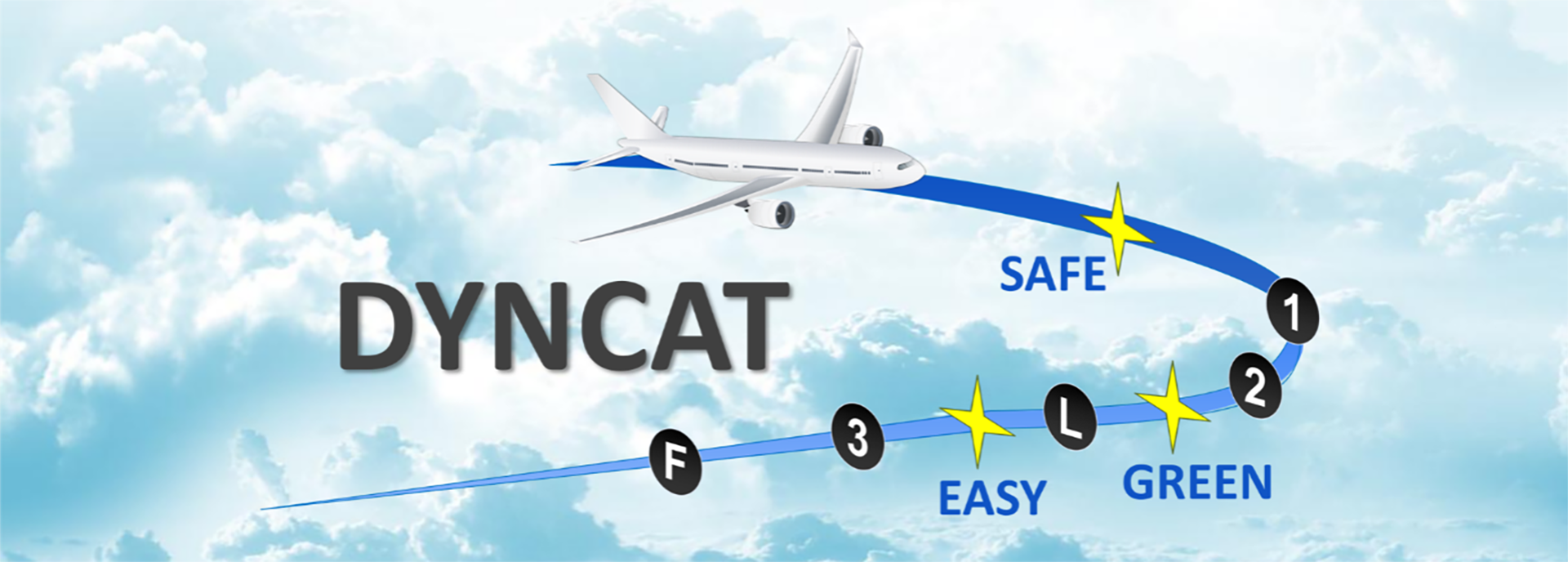During the approach, pilots need to configure the aircraft for landing (extending flaps, slats and landing gear) and reduce speed prior to touchdown. Flying an energy-efficient and environmentally-friendly approach profile is really challenging in this phase, and it is related to the skill of pilots to limit noise impact and fuel consumption, while also taking into account restrictions put in place by air traffic control, an estimated remaining distance-to-fly and finally, the weather predictions which are often unavailable on board.
The SESAR Exploratory Research project DYNCAT (Dynamic Configuration Adjustment in the TMA), recently launched by project coordinator DLR together with Swiss, Thales, Empa and SkyLab, is focusing on supporting pilots in configuration management and in the development of greener, more predictable approach profiles.
DYNCAT aims at considering environmental factors like CO2 and noise when optimising 4D trajectories, thus enabling safer, more cost-efficient and more environmentally sustainable operations in the terminal manoeuvring area (TMA). DYNCAT will analyse the existing aircraft operating and air traffic control procedures and propose improvements to on-board and ground procedures. The project will also identify the necessary technological and regulatory changes for improved airborne procedures and will assess the environmental potential of improved operations. Specifically, DYNCAT will focus on optimising the high-lift system actuation for low-noise approaches within the extended TMA. It is clear that novel concepts must not compromise safety; on the contrary, a better integration of configuration management into the flight management system is expected to increase system awareness and offer pilots more support. Simulations will enable the assessment of the predictability of the flight with and without the new support functions. This will be done exemplarily for the A320 family and for Zurich Airport, recognising that the results and outcomes of DYNCAT can be adapted to all current airliners and other airport environments. In summary the project aims are:
- highlight the impact of current (approach) ATM operations in the TMA on the environment, cost efficiency and safety based on actual flight data
- quantify the potential to reduce the environmental impact (noise, CO2 emissions)
- measure improvements through novel pilot support functions on flight predictability and flyability (pilot workload, safety)
- develop measures to be implemented in the short term (mainly on-board procedures) and mid-term (mainly new on-board system functionalities), identify the necessary enablers, such as new technological functions (supportive tools, data exchange) and regulatory changes to allow improved airborne procedures
The DYNCAT consortium is in a unique position having access to a large set of recordings of data in order to analyse and understand every possible impact on efficiency of an approach (see Figure 1). First of all, data are needed to understand the current situation at the airport in general, e.g. the traffic distribution and weather conditions. This is provided by radar data of the outgoing and incoming air traffic at the airport and meteorological data. Furthermore, detailed data of about 640 selected flights at Zurich airport are available. This comprises operational flight data from the aircraft itself (e.g. fuel consumption, gross weight, flap and gear selection, speeds), the radio communication between air traffic control and the investigated flight (contains given instructions, restrictions and clearances) and acoustical measurement data to investigate the noise impact. The availability of real-world operational data and high-fidelity simulation models at the DYNCAT consortium guarantees a high relevance and significance of the expected results. Combining the various data sources, DYNCAT will be able to quantify the real effects and, based on the analysis, identify ways to improve and better harmonise air traffic control and aircraft operating procedures and in doing so reducing the environmental impact (noise, CO2).


